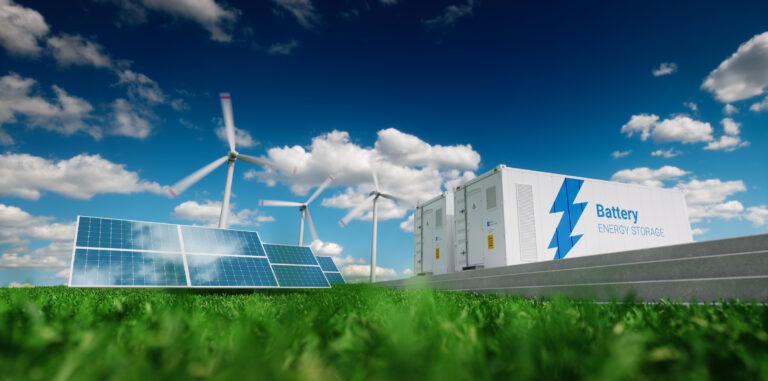The month of February saw lots of announcements for green and blue hydrogen projects planned along the U.S. Gulf Coast. The combination of favorable IRA tax credits (some of the most competitive tax credits for low-carbon energy projects), a robust oil and gas industry, and easy shipping access makes the U.S. Gulf Coast a prime location for producing and shipping low-carbon ammonia to countries like Japan who are looking to decarbonize their economy without easy access to do so at home. BTU Analytics previously wrote about the announcements coming from Japanese companies, which put the country in a position to be a leader in the use of low-carbon ammonia.
Additionally, the owners of the Petra Nova CCS project (a CCS unit attached to a coal fired power plant in TX) announced this month they would be restarting the operations of the project after nearly three years of being offline. When Petra Nova was operating from 2016–2020, 45Q tax credits were far lower than they are now and crashing oil prices hurt the value of CO2 used in EOR. While the economic environment for Petra Nova is more favorable now than when it shut down, BTU Analytics wrote about how this is not necessarily a green light for other coal power plant CCS projects, in part because of capital costs and operational challenges Petra Nova had outlined in their report to the DOE on the plant’s operations.
- New Project Announcements Advance Blue Ammonia Capacity on U.S. Gulf Coast (2/23)
- BTU’s Take: This week, ExxonMobil (NYSE: XOM) announced a non-binding agreement to work with South Korean chemical firm SK Materials (KRX: 036490) in developing a blue ammonia supply chain. Earlier this year, XOM began the FEED phase on its proposed blue hydrogen facility in Baytown, TX. Aside from servicing on-site and local demand for low-carbon hydrogen, some of the project’s output is now slated for producing low-carbon ammonia, which can be shipped abroad. SK Materials plans to import the ammonia into South Korea to be co-fired in coal power plants. Relatedly, Danish firm CIP announced that it’s acquiring a majority stake in an 8,000 t/d blue ammonia project planned for the U.S. Gulf Coast. CIP’s statement suggests that Europe is the targeted end-market for production. BTU Analytics has frequently noted in recent months that export markets are driving U.S. hydrogen and ammonia development, particularly along the Gulf Coast. With existing infrastructure, access to cheap natural gas, favorable geology for carbon sequestration, and federal subsidies augmented by the Inflation Reduction Act, the U.S. Gulf Coast is internationally advantaged as a location for projects such as these. Low-carbon ammonia projects under development in TX and LA now total more than 49,000 t/d of production capacity.
- U.S. Gulf Coast Clean Ammonia Projects Continue to Gain Momentum (2/8)
- BTU’s Take: This week, two announcements advanced the U.S. Gulf Coast’s build-out of infrastructure for producing and shipping blue ammonia, a burgeoning low-carbon commodity from which carbon is captured and removed from natural gas feedstock. Linde (NYSE: LIN) announced it will build a $1.8 billion greenfield plant to supply hydrogen to OCI’s (AMS: OCI) new Beaumont blue ammonia plant. The project is being advanced on an aggressive timetable, aiming to enter service in 2025 with a capacity of 1.1 Mtpa ammonia production. Additionally, Mitsubishi (TYO: 8058), RWE (FWB: RWE), and Lotte (KRX: 011170) announced a joint study of potential for producing and exporting clean ammonia at Corpus Christi. With access to cheap natural gas, favorable geology for carbon sequestration, and federal subsidies recently augmented by the Inflation Reduction Act (IRA), the U.S. Gulf Coast is internationally advantaged as a location for projects such as these. BTU Analytics wrote last month on how export markets are playing a strong role in U.S. hydrogen and ammonia development.
- The World’s Largest Carbon Capture Plant Gets a Second Chance in Texas (2/8)
- BTU’s Take: The Petra Nova carbon capture and sequestration (CCS) project in Texas, which captures CO2 from the W.A. Parish coal-fired power plant outside of Houston, is turning back on after a nearly three-year hiatus (the power plant remained operational while the CCS project was offline). While BTU Analytics notes that Petra Nova is not the world’s largest CCS installation, it does house the largest instance of the post-combustion capture process in which CO2 is isolated from flue exhaust after fuel is burned. The 45Q tax credits enhanced in 2022’s Inflation Reduction Act (IRA) lift the CCS project’s revenue potential, though the project has faced challenges operating economically to-date. NRG (NYSE: NRG) sold its 50% stake in the CCS asset for just $3.6 million to ENEOS Holdings (TYO: 5020), now the sole owner of the project. ENEOS states they are primarily interested in gaining technical knowledge that can be applied to CCS projects in Japan. BTU Analytics is tracking seven other CCS projects currently in development at U.S. coal power plants, as well as the recently cancelled San Juan CCS project in New Mexico.
For more timely access to all Energy Transition First Takes, subscribe to StreetAccount, FactSet’s provider of energy market news, equity market intelligence, and the distributor of BTU Analytics’ First Take. Sign up for your free trial here.









